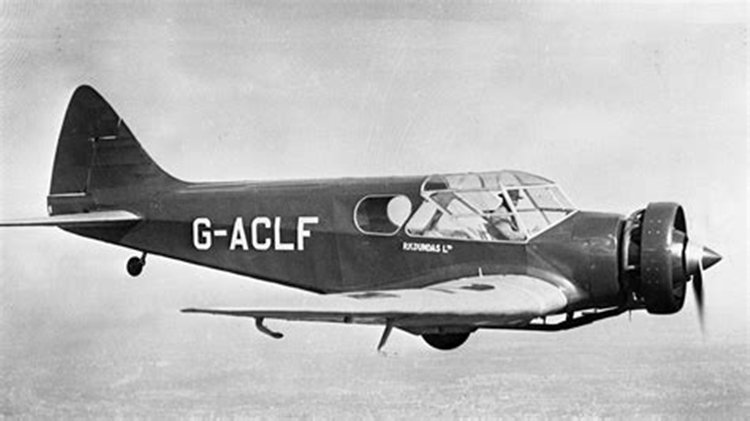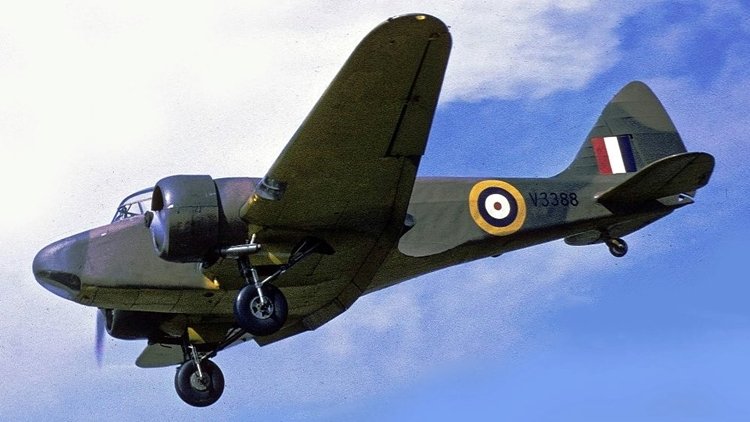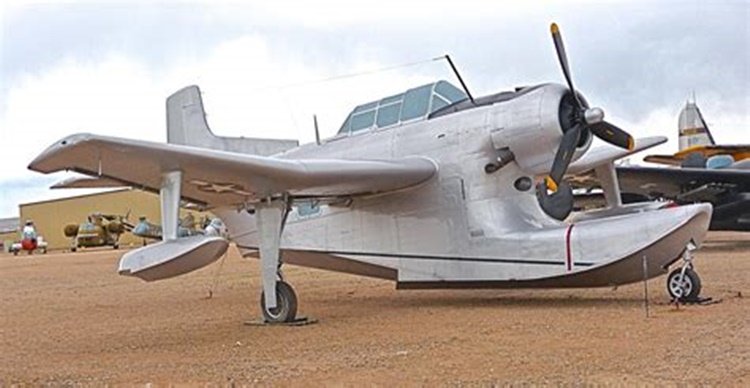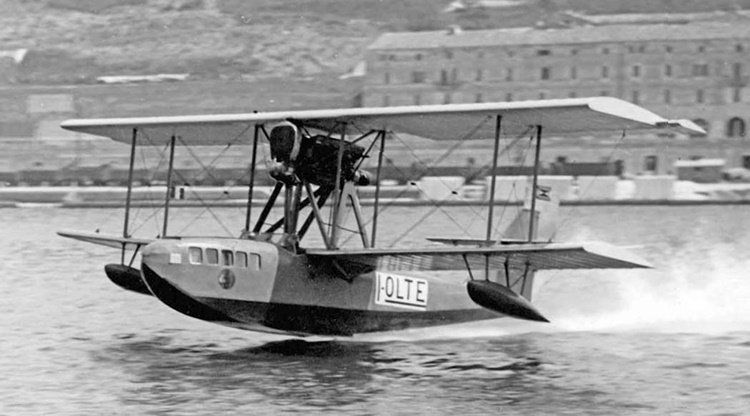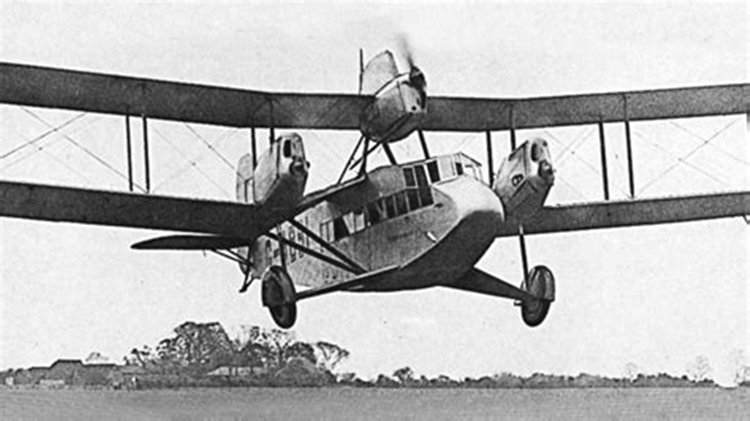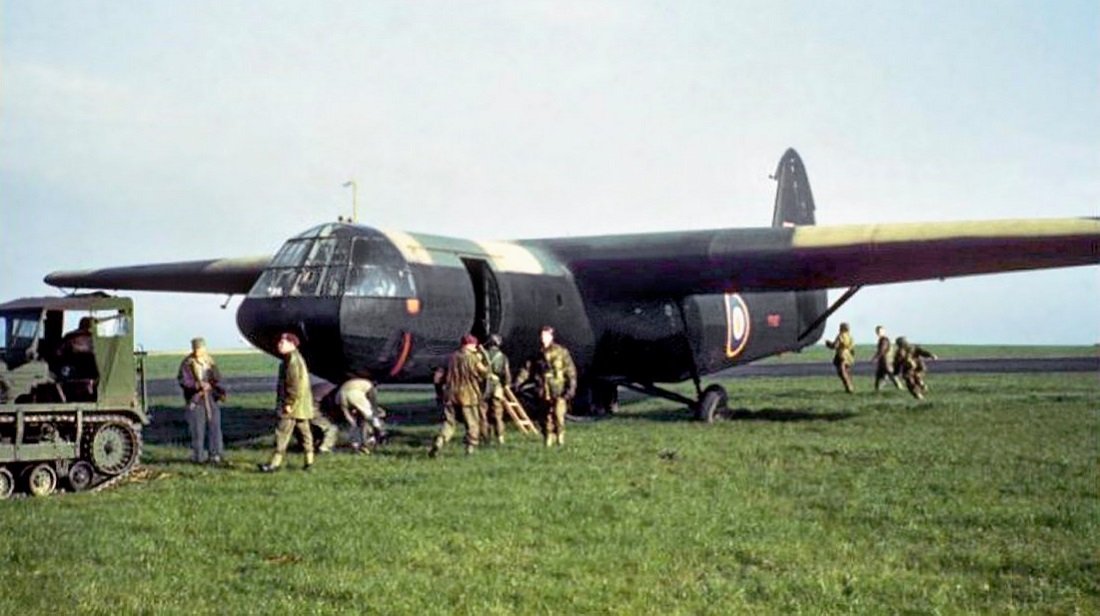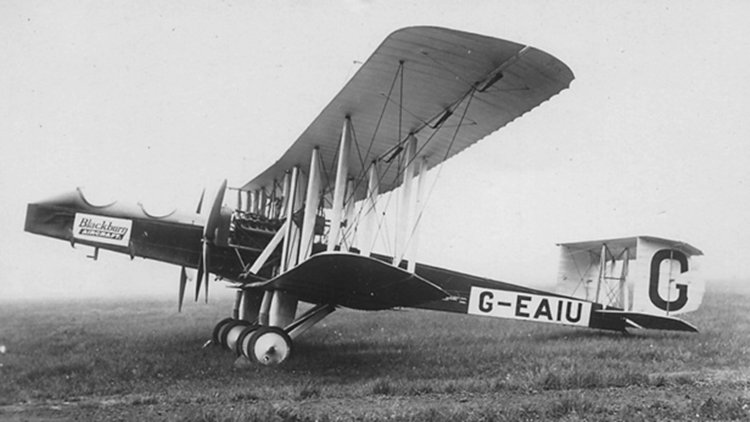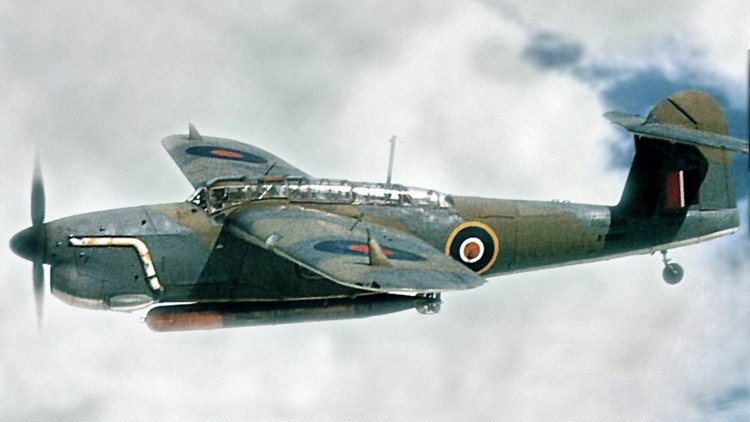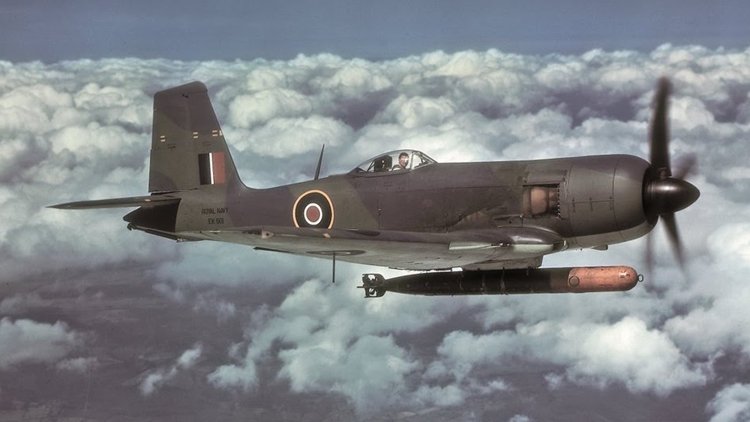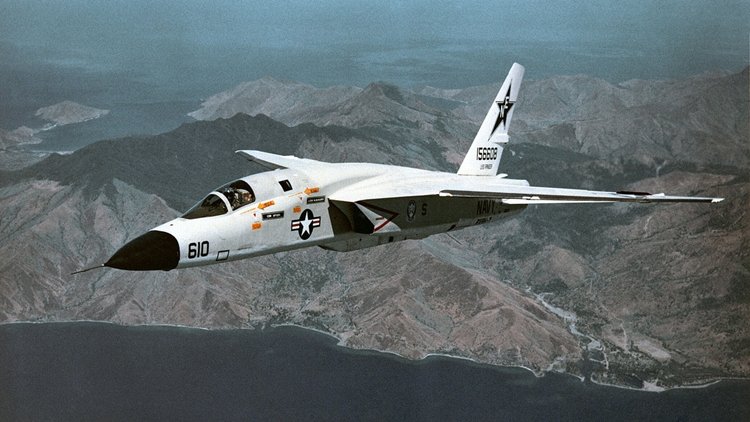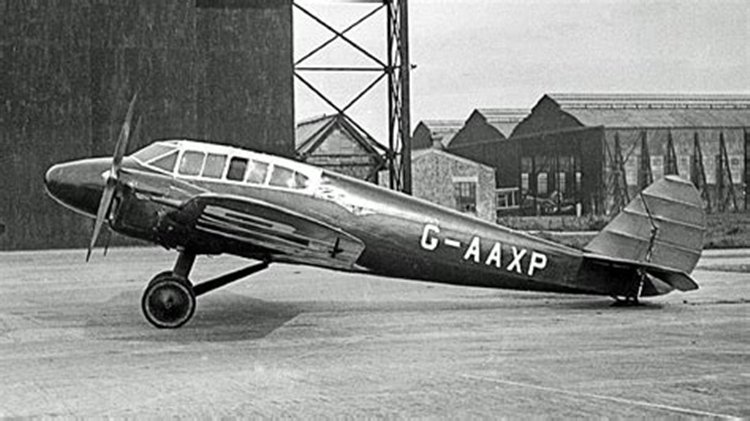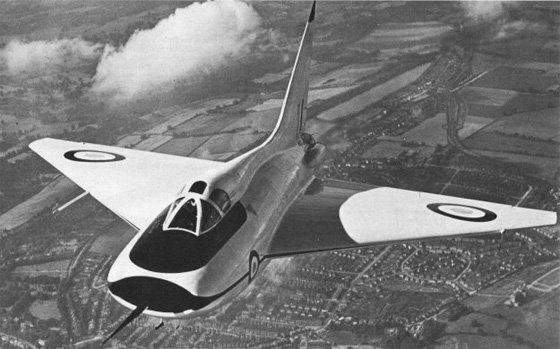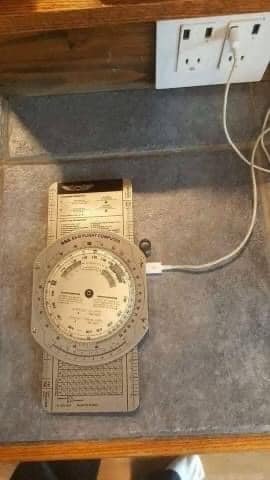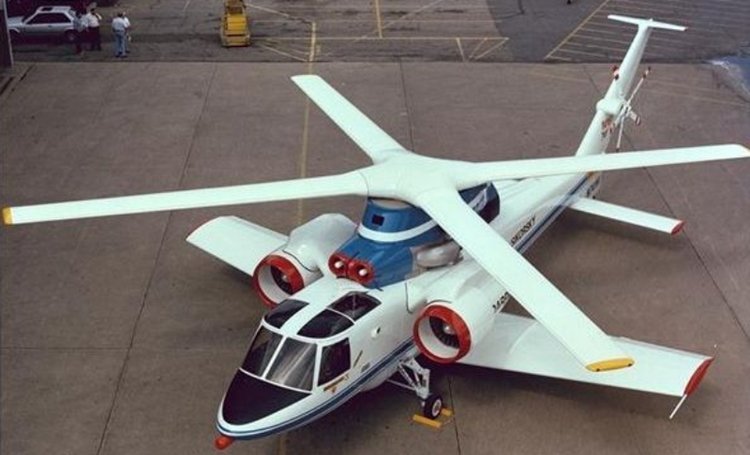-
Posts
7,574 -
Joined
-
Last visited
-
Days Won
67
Content Type
Profiles
Forums
Gallery
Downloads
Blogs
Events
Store
Aircraft
Resources
Tutorials
Articles
Classifieds
Movies
Books
Community Map
Quizzes
Videos Directory
Everything posted by red750
-
Not to be confused with the 1928 Supermarine Seamew or 1940 Curtiss SO3C Seamew. The Short SB.6 Seamew was a British aircraft designed in 1951 by David Keith-Lucas of Shorts as a lightweight anti-submarine platform to replace the Royal Navy Fleet Air Arm (FAA)'s Grumman Avenger AS 4 with the Reserve branch of the service. It first flew on 23 August 1953, but, due to poor performance coupled with shifting defence doctrine, it never reached service and only 24 production aircraft had flown before the project was cancelled. It has been described as a "camel amongst race-horses". The Short Seamew was selected to fulfill Admiralty Specification M.123D for a simple, lightweight anti-submarine aircraft capable of unassisted operation from any of the Royal Navy's aircraft carriers in all but the worst of conditions, in particular escort carriers which the UK still had in considerable numbers from the Second World War. Although specifically designed for naval operations, the Seamew was also intended for land-based use by the RAF. It was to be suitable for mass production and operation by the Air Branch of the Royal Naval Volunteer Reserve (RNVR). This specification was in response to the alarming increase in capabilities of the Soviet submarine forces following the Second World War. Three prototypes were ordered in April 1952 and the first flight (XA209), piloted by test pilot Sqn. Ldr. Walter J. "Wally" Runciman, took place on 23 August 1953. This same aircraft, also piloted by Runciman, took part in the 1953 Farnborough Airshow three weeks later. In 1954 both XA209 and the second prototype XA213 took part at Farnborough, where the following year both prototypes and two production AS Mk 1 models (XE171 and XE172) gave a formation display. The pilot and observer were located in tandem cockpits located high up in the front of the deep, narrow fuselage, creating a decidedly "curious" profile. They sat atop the Armstrong Siddeley Mamba turboprop in front and the weapons bay to the rear of them. The design had originally called for the tried and tested Rolls-Royce Merlin piston engine but the Royal Navy had made it policy to phase out piston engines, in order that supplies of highly flammable high octane aviation fuel need not be carried in large quantities on ships. The turboprop engine also caused less airframe vibration so that the pilot could be sat directly over it with the absence of a piston engine ignition system which would have interfered with the radar scanner mounted below the engine housing. For simplicity, and so that a nosewheel would not obscure the forward field of the radar scanner, a fixed tailwheel undercarriage was used. The long stroke necessary on the main undercarriage to allow for heavy deck landings while giving the radar scanner and propeller adequate clearance from the ground resulted in an alarming attitude on the ground and the cockpits mounted at a seemingly perilous height. For landing the tailwheel extended so it could land at a more level attitude. The pilot and observer sat very far forward in order for the pilot to have a reasonable field of downward vision for takeoff and landing and so that both he and the observer had a good field of view for spotting surface vessels even when in level flight. A total of 26 Seamew were produced. Variants. SB.6 Seamew Three prototype anti-submarine aircraft, one completed as a structural test rig. SB.6 Seamew AS.1 (Specifications below) Production anti-submarine aircraft for the Royal Navy, 60 aircraft ordered later amended to 30 but only 24 completed. SC.2 Seamew MR.2 Production aircraft for the Royal Air Force Coastal Command, larger wheels with low-pressure tyres, manual wing-folding and no deck handling gear, 30 aircraft ordered but only 4-built that were converted or completed to AS.1 standard.
-
The Airspeed Fleet Shadower was a British long-range patrol aircraft design that did not go beyond the prototype stage. A similar aircraft, the General Aircraft Fleet Shadower, was also built to the extent of prototypes. While the concept of a fleet shadower had some promise, the resulting designs were soon overtaken by wartime developments in airborne radar. The Royal Navy envisaged a need (Operational Requirement OR.52) for an aircraft that could shadow enemy fleets at night and the resulting Specification S.23/37 called for a slow-flying low-noise aircraft with a long range, capable of operating from an aircraft carrier's flight deck. The specified performance was to be a speed of 38 knots (70 km/h) at 1,500 ft (460 m) for not less than six hours. Five companies showed interest: Percival, Short Brothers, Fairey Aviation, General Aircraft Ltd and Airspeed. General Aircraft submitted the G.A.L.38, of very similar general design to the AS.39. General Aircraft and Airspeed were selected to build two prototypes each and Airspeed received a contract on 10 August 1938.
-
The Airspeed AS.45 Cambridge was a British advanced trainer of the Second World War built by Airspeed Limited. It did not reach the production stage. The AS.45 was designed in response to Air Ministry Specification T.4/39 for a single-engined advanced trainer to guard against potential shortages of current types, such as the Miles Master and North American Harvard. Airspeed's design, given the provisional service name Cambridge, was a low-wing monoplane of composite construction with a single piston engine and a tailwheel-type, retractable undercarriage. The Cambridge's fuselage had a steel tube structure, while the wings and tail were wooden, with plywood skinning. Pilot and instructor sat in tandem in an enclosed cockpit, with each crew position having doors on each side, one for normal use and one an emergency exit. A 730 hp (540 kW) Bristol Mercury engine drove a three-bladed propeller. The first of two prototypes flew on 19 February 1941. Testing showed deficiencies in both maximum speed and low-speed flight characteristics. There was no attempt to rectify these shortcomings, partly because there was no shortage of advanced trainers thanks to plentiful supplies of Masters and Harvards and partly because of the importance of Airspeed's other products, the Horsa and Oxford.
-
The Airspeed AS.5 Courier was a British six-seat single-engined light aircraft that was designed and produced by the British aircraft manufacturer Airspeed Limited at Portsmouth. It has the distinction of being the first British aircraft fitted with a retractable undercarriage to go into quantity production. Initial development work on the Courier started in 1931, being envisioned as an advanced aircraft intended primarily for private owner-pilots. Its ambitious design, including its unorthodox undercarriage, attracted the attention of the British aviation pioneer, Sir Alan Cobham, who saw it as a suitable aircraft for demonstrating his airborne refuelling techniques for long distances flights. Following the order's confirmation in August 1932, a single prototype was constructed, performing its maiden flight on 10 April 1933. The Courier quickly proved itself to be a sound design as well as capable of laudable performance, encouraging Airspeed to commence quantity production months later. The Courier was primarily purchased by civilian customers, being used as an early airliner, racing aircraft and flying testbed. It was also used as a communications aircraft by the Royal Air Force during the Second World War. Only a single aircraft flew briefly in the postwar era. The Airspeed Courier was a wooden low-wing cantilever cabin monoplane, incorporating numerous advanced features for the era. One such novelty was its use of a retractable undercarriage; this was a patented innovation internally developed by Airspeed, to which the company would subsequently earn revenue from when it was adopted upon other aircraft such as the Airspeed Oxford. It was estimated that the additional weight of the mechanism for retracting and deploying the undercarriage amounted to 30lb, while an increase in cruising speed of 20 MPH was achieved via reduced drag. Actuation was performed by the pilot via a hand-driven hydraulic pump. According to Taylor, the undercarriage generated considerable attention amongst the aviation press early on. A total of 16 Couriers was built. For further details of the development, design, operation and variants, click here.
-
The Airspeed AS.10 Oxford is a twin-engine monoplane aircraft developed and manufactured by Airspeed. It saw widespread use for training British Commonwealth aircrews in navigation, radio-operating, bombing and gunnery roles throughout the Second World War. The Oxford was developed by Airspeed during the 1930s in response to a requirement for a capable trainer aircraft that conformed with Specification T.23/36, which had been issued by the British Air Ministry. Its basic design is derived from the company's earlier AS.6 Envoy, a commercial passenger aircraft. After its maiden flight by Percy Colman on 19 June 1937, it was quickly put into production as part of a rapid expansion of the Royal Air Force (RAF) in anticipation of a large-scale conflict. As a consequence of the outbreak of war, many thousands of Oxfords were ordered by Britain and its allies, including Australia, Canada, France, New Zealand, Poland, and the United States. Following the end of the conflict, the Oxford continued to achieve export sales for some time, equipping the newly formed air forces of Egypt, India, Israel, and Yugoslavia. It was considered to be a capable trainer aircraft throughout the conflict, as well as being used as a general-purpose type. A number of Oxfords are preserved today on static display worldwide. The Oxford was a low-wing twin-engine cantilever monoplane, featuring a semi-monocoque constructed fuselage, a conventional landing gear configuration and a wooden tail unit. It was capable of reproducing the flight characteristics of many contemporary front-line aircraft then in military service. It was specifically developed to be suitable for a range of training missions, including navigation, flying instruction, night flying, instrument flying, wireless, direction-finding, gunnery, and vertical photography. The Oxford was specifically planned and developed to incorporate various modern innovations and equipment fittings, including a full array of instruments and controls within the cockpit, which assisted in its principal trainer role. In addition, the Oxford could also be used in various secondary roles, such as an air ambulance and maritime patrol aircraft. From November 1940, the Royal Australian Air Force received 391 Oxford I and IIs from RAF contracts for use in Australia. Most of the survivors were sold in the early 1950s. A total of 8,852 Oxfords were produced. For more details of development, design, opertional history, operators and variants, click here.
-
The Columbia XJL is a large single-engined amphibious aircraft designed by Grumman Aircraft but built by the Columbia Aircraft Corp. It was intended to replace the Grumman J2F Duck but the type did not reach production status. The Grumman J2F Duck biplane amphibian had successfully served the United States Navy (USN) in quantity from late 1934 onwards. The final 330 examples were built in 1941/42 under sub-contract by the Columbia Aircraft Corp, retaining the J2F-6 designation. At the end of World War II, Grumman completed a major re-design of the aircraft for the USN as a Wright R-1820-56 powered monoplane amphibian. The new design was turned over to the Columbia Aircraft Corporation for development and construction so that Grumman could focus on the production of fighter aircraft for the USN. The aircraft strongly resembles the J2F Duck, except for its monoplane layout, and has been referred to as a "single-winged Duck". It is, however, a completely new design. The USN ordered three XJL-1 experimental aircraft from Columbia, with the first being used for destructive strength testing on the ground. The remaining two airframes, assigned USN BuAer Nos 31399 and 31400, were delivered to the USNs test establishment at Patuxent River Naval Air Station Maryland for evaluation in 1946. The two aircraft tested at Patuxent River were found to have repeated structural failures of various components and testing was abandoned on 21 September 1948. The aircraft were deleted from the USN inventory in February 1949. No further orders were placed for production of the JL design. The aircraft were sold as surplus in 1959. 31399 was registered N54207 and is undergoing restoration at Yanks Air Museum, Chino, California. 31400 was registered N54205, and, restored, is now on display at the Pima Air & Space Museum in Tucson, Arizona.
-
The CANT 10 was a flying boat airliner produced in Italy in the 1920s. It was a conventional biplane design with single-bay, unstaggered wings of equal span, having seating for four passengers within the hull, while the pilot sat in an open cockpit. The engine was mounted in pusher configuration in the interplane gap. CANT 10 flying boats were used by Società Italiana Servizi Aerei for over a decade, linking destinations in the Adriatic Sea. Two CANT 10ters were used by a company called TAXI AEREI in Buenos Aires, operating flights from the River Plate. One of them was lost in an accident and the other one was bought by the Paraguayan government for the Naval Aviation in 1929; it was used as a transport during the Chaco War and was withdrawn from use in 1933. A total of 18 CANT 10's were built.
-
The Airspeed AS.4 Ferry was three-engined ten-seat biplane airliner designed and built by the British aircraft manufacturer Airspeed Limited. It was the company's first powered aircraft to be produced. It was proposed for development in April 1931, shortly following Airspeed's founding. The Ferry was designed specifically for Alan Cobham's National Aviation Day events, performing 'air-experience' flights for the general public. On 5 April 1932, the prototype performed its maiden flight. Only four examples were produced at the company's facilities in York during the early 1930s. Two aircraft served with the Royal Air Force during the opening years of the Second World War, although largely being used as instructional airframes. The Airspeed AS.4 Ferry was an unusual biplane airliner designed around the needs of Alan Cobham, one of the company's directors. It featured an unorthodox configuration, particularly the mounting of its third engine in the centre section of the upper wing, an arrangement which was principally adopted to provide the pilot with superior external visibility, although it also presented some aerodynamic benefits as well. The three engines installed upon the Ferry consisted of a pair of de Havilland Gipsy IIs mounted upon the upper surface of the lower wing, while the engine installed upon the upper wing was an inverted de Havilland Gipsy III instead. While the fuel tanks of the Ferry had sufficient size for around five hours of flight at cruising speeds, to best suit its air-experience role, the tanks were only ever partially filled, else it wouldn't be able to carry its maximum capacity of ten passengers. The Ferry was a biplane with equal-span wings, both of which were positioned high relative to the fuselage, with the lower wing being aligned with the top of the fuselage. According to Alan Cobham, this arrangement was to provide the passengers with an unobstructed view of the ground. The structure of the aircraft was conventional and largely composed of spruce and plywood, featuring monocoque construction across the fuselage. The wings were supported by box spars paired with wooden flanges and steel tubes for key areas such as the compression drag struts. While the Ferry had been designed specifically for short-haul pleasure flying, the design team made provisions towards its use in other roles, such as a longer distance airliner carrying five or six passengers with luggage. Despite having ten seats, which necessitated the fitting of a radio under British regulations of the era, it was certified for local flying without any radio present. To enable a faster turnaround, relatively rapid refuelling was facilitated via a pipeline to the tank from the side of the fuselage. An unusual feature of the design, believed to provide a beneficial ground-cushioning effect as well as possibly additional lift, was the aerofoil-section fairings present on the split-axle undercarriage. For details of development and operational istory, click here.
-
The Airspeed AS.51 Horsa was a British troop-carrying glider used during the Second World War. It was developed and manufactured by Airspeed Limited, alongside various subcontractors; the type was named after Horsa, the legendary 5th-century conqueror of southern Britain. Having been greatly impressed by the effective use of airborne operations by Germany during the early stages of the Second World War, such as during the Battle of France, the Allied powers sought to establish capable counterpart forces of their own. The British War Office, determining that the role of gliders would be an essential component of such airborne forces, proceeded to examine available options. An evaluation of the General Aircraft Hotspur found it to lack the necessary size, thus Specification X.26/40 was issued. It was from this specification that Airspeed Limited designed the Horsa, a large glider capable of accommodating up to 30 fully equipped troops, which was designated as the AS 51. The Horsa was used in large numbers (3,799) by the British Army Air Corps and the Royal Air Force (RAF); both services used it to conduct various air assault operations through the conflict. The type was used to perform an unsuccessful attack on the German Heavy Water Plant at Rjukan in Norway, known as Operation Freshman, and during the invasion of Sicily, known as Operation Husky. Large numbers of Horsa were subsequently used during the opening stages of the Battle of Normandy, being used in the British Operation Tonga and American operations. It was also deployed in quantity during Operation Dragoon, Operation Market Garden, and Operation Varsity. Further use of the Horsa was made by various other armed forces, including the United States Army Air Forces. For details of development, design, production, operational history and variants, click here.
-
The Blackburn R.T.1 Kangaroo was a British twin-engine reconnaissance torpedo biplane of the First World War, built by Blackburn Aircraft. In 1916, the Blackburn Aircraft Company designed and built two prototypes of an anti-submarine floatplane designated the Blackburn G.P. or Blackburn General Purpose. It was not ordered but Blackburn developed a landplane version as the Blackburn R.T.1 Kangaroo (Reconnaissance Torpedo Type 1), reflecting the Air Board's growing interest in using landplanes rather than floatplanes for convoy escort and anti-submarine patrol duties, with operations not being limited by poor sea conditions, and giving better performance than seaplanes. The Kangaroo was a twin-engine tractor biplane of wood and fabric construction. It had four-bay wings with a large upper-wing overhang which could fold for ease of storage. The first aircraft was delivered to Martlesham Heath in January 1918. Test results were disappointing, with the rear fuselage being prone to twisting and the aircraft suffering control problems, which led to the order for 50 aircraft being cut to 20, most of which were already partly built. From the sixth aircraft, they were powered by the more powerful Rolls-Royce Falcon III engine replacing the 250 hp (190 kW) Rolls-Royce Falcon II. The Kangaroo entered service later that year with No. 246 Squadron RAF based at Seaton Carew, County Durham which had six months of wartime operations, in which they sank one U-boat and damaged four others. UC-70, was spotted lying submerged on the sea bottom near Runswick Bay on 28 August 1918, by a Kangaroo flown by Lt E. F. Waring. The U-boat was badly damaged by the near miss of a 520 lb (240 kg) bomb and finished off by the destroyer HMS Ouse. Post World War I In 1919, three surviving RAF Kangaroos were sold to the Grahame-White Aviation Co Ltd, based at Hendon Aerodrome. Eight others were sold back to Blackburn Aircraft, three being converted with a glazed cabin for its subsidiary, North Sea Aerial Navigation Co Ltd, also based at Brough Aerodrome. Several different configurations were embodied for the civil market, for cargo, pilot training and/or the accommodation of up to eight passengers. In the first few months of 1919, most of these converted aircraft continued to fly (and sometimes crash) in military markings, then the survivors were repainted with civilian registrations and commercial titles. In May 1919, joy-riding, cargo and passenger charters took place at locations including Brough, Leeds, West Hartlepool, Gosport and Hounslow Heath. During August 1919, three Kangaroos flew to Amsterdam for the ELTA air traffic exhibition and spent several weeks giving flights to an estimated 1,400 passengers. On 30 September 1919, North Sea Aerial Navigation Co Ltd started a regular passenger service between Roundhay Park (Leeds) and Hounslow Heath. In 1920, the company was renamed North Sea Aerial & General Transport Co Ltd and services were extended to Amsterdam. In 1919 the Australian government offered a prize of £A10,000 for the first Australians in a British aircraft to fly from Great Britain to Australia within 30 consecutive days. A team with a Kangaroo (G-EAOW) selected Charles Kingsford Smith as navigator, but he withdrew. On 21 November 1919, the Kangaroo took off from Hounslow Heath in an attempt to win the prize. It was forced to make an emergency landing at Suda Bay, Crete with a suspected sabotaged engine and the aircraft was abandoned there. The race was won by a Vickers Vimy piloted by Captain Ross Macpherson Smith with his brother Lieutenant Keith Macpherson Smith as co-pilot.
-
The Fairey Barracuda was a British carrier-borne torpedo and dive bomber designed by Fairey Aviation. It was the first aircraft of this type operated by the Royal Navy's Fleet Air Arm (FAA) to be fabricated entirely from metal. The Barracuda was developed as a replacement for the Fairey Albacore biplanes. Development was protracted due to the original powerplant intended for the type, the Rolls-Royce Exe, being cancelled. It was replaced by the less powerful Rolls-Royce Merlin engine. On 7 December 1940, the first Fairey prototype conducted its maiden flight. Early testing revealed it to be somewhat underpowered. However, the definitive Barracuda Mk II had a more powerful model of the Merlin engine, while later versions were powered by the larger and even more powerful Rolls-Royce Griffon engine. The type was ordered in bulk to equip the FAA. In addition to Fairey's own production line, Barracudas were also built by Blackburn Aircraft, Boulton Paul, and Westland Aircraft. The type participated in numerous carrier operations during the conflict, being deployed in the Atlantic Ocean, Mediterranean Sea, and the Pacific Ocean against the Germans, Italians, and Japanese respectively during the latter half of the war. One of the Barracuda's most noteworthy engagements was a large-scale attack upon the German battleship Tirpitz on 3 April 1944. In addition to the FAA, the Barracuda was also used by the Royal Air Force, the Royal Canadian Navy, the Dutch Naval Aviation Service and the French Air Force. After its withdrawal from service during the 1950s, no intact examples of the Barracuda were preserved despite its once-large numbers, although the Fleet Air Arm Museum has ambitions to assemble a full reproduction. a total of 2602 Barracudas were built. For details of development and operational history, click here. Variants Barracuda Two prototypes (serial numbers P1767 and P1770) based on the Fairey Type 100 design. Mk I First production version, Rolls-Royce Merlin 30 engine with 1,260 hp (940 kW), 30 built Mk II Upgraded Merlin 32 engine with 1,640 hp (1,225 kW), four-bladed propeller, ASV II radar, 1,688 built Mk III Anti-submarine warfare version of Mk II with ASV III radar in a blister under rear fuselage, 852 built Mk IV Mk II (number P9976) fitted with a Rolls-Royce Griffon engine with 1,850 hp (1,380 kW), first flight 11 November 1944, abandoned in favour of Fairey Spearfish. Mk V Griffon 37 engine with 2,020 hp (1,510 kW), payload increased to 2,000 lb (910 kg), ASH radar under the left wing, revised tailfin, 37 built.
-
The Blackburn Firebrand was a British single-engine strike fighter for the Fleet Air Arm of the Royal Navy designed during World War II by Blackburn Aircraft. Originally intended to serve as a pure fighter, its unimpressive performance and the allocation of its Napier Sabre piston engine by the Ministry of Aircraft Production for the Hawker Typhoon caused it to be redesigned as a strike fighter to take advantage of its load-carrying capability. Development was slow and the first production aircraft was not delivered until after the end of the war. Only a few hundred were built before it was withdrawn from front-line service in 1953. The Firebrand did not see action in World War II, as TF 4s were not issued to 813 Naval Air Squadron until 1 September 1945. The squadron was disbanded 30 September 1946 without deploying to sea. It was reformed with TF 5s on 1 May 1947 and flew them from the carrier HMS Implacable, later HMS Indomitable, until it was re-equipped with turboprop Westland Wyvern attack aircraft in February 1953. 827 Naval Air Squadron received their TF 5 and 5As on 13 December 1950 and flew them primarily off the carrier HMS Eagle until it disbanded on 19 November 1952. A variety of second-line squadrons were issued Firebrands of various marks for training or trials at one time or another. In test pilot and naval aviator Captain Eric Brown's opinion the aircraft was "short of performance, sadly lacking in manoeuvrability, especially in rate of roll". The position of the cockpit even with the trailing edge of the wing gave the pilot a very poor view over the nose, inhibited his ability to view his target and to land his aircraft aboard a carrier, sufficient for Brown to call it "a disaster as a deck-landing aircraft". Variants Blackburn B-37 Three prototypes ordered to meet Specification N.11/40, named Firebrand on 11 July 1941. Second prototype re-built as T.F. II prototype.[15] Firebrand F. I Production variant of the Blackburn B.37 with an order for 50 aircraft to be built at Brough, most completed as T.F. II and T.F. III variants, first nine completed as F. Is. Firebrand T.F. II Improved variant, 12 built from original production branch. Firebrand T.F. III Blackburn B-45, a Centarus VII powered-variant, two prototypes to S.8/43[16] and 27 production aircraft for original production batch. Firebrand T.F. IV (Specifications below) Blackburn B-46, improved variant with 2,520 bhp (1,880 kW) Centaurus IX or Centaurus 57,[16] 250 ordered, but only 170 were completed, of which 124 were converted to T.F. 5 standard, some before delivery.[11] Six were modified and designated as T.F. IV(mod). Firebrand T.F. 5 Improved variant, 124 modified from T.F. IV, two conversions to T.F. 5A. Firebrand T.F. 5A One prototype modified from a T.F. 5 and six conversions from either T.F. IV or Vs
-
The Blackburn Perth was a British flying boat which was in service during the interwar period. It was essentially an upgraded Iris, and hence the largest flying-boat to serve with the Royal Air Force at the time (and the largest biplane flying boat ever to serve with the RAF). The Blackburn R.B.3A Perth was designed as a replacement for the earlier Iris to Air Ministry Specification 20/32. Developed from the Iris Mk. V, the Perth first flew in 1933. It differed from the Iris by replacing the Rolls-Royce Condor engines of the Iris by more powerful Rolls-Royce Buzzards and having an enclosed cockpit for the pilots. Unusually, in addition to its normal armament, the Perth was fitted with a Coventry Ordnance Works C.O.W 37 mm (1.46 in) autocannon in its bows. The Perth entered service with the RAF in January 1934, when the second aircraft was delivered to No. 209 Squadron RAF at RAF Mount Batten Plymouth. Perths remained in service until 1937, being replaced by the Short Singapore and the Saro London. One aircraft was retained by the Marine Aircraft Experimental Establishment until 1938. Only four Perths were built.
-
The Blackburn R.B.2 Sydney (serial N241) was a long-range maritime patrol flying boat developed for the Royal Air Force in 1930, in response to Air Ministry Specification R.5/27. It was a parasol-winged braced monoplane of typical flying boat arrangement with triple tailfins and its three engines arranged on the wing's leading edge. After evaluation, it was not ordered into production and no further examples were built. With development of the Sydney abandoned, construction of a cargo-carrying variant powered by radial engines, the C.B.2 Nile was also ended.
-
The Blackburn B-54 and B-88 were prototype carrier-borne anti-submarine warfare aircraft of the immediate post-Second World War era developed for the Royal Navy's Fleet Air Arm (FAA). They shared a conventional monoplane design with a mid-mounted inverted-gull wing and tricycle undercarriage. The pilot and observer sat in tandem under a long canopy atop the fuselage. The B-54 had a piston engine while the B-88 had a gas turbine driving large contra-rotating propellers. The radar scanner was mounted in a retractable radome in the rear fuselage, behind a long internal weapons bay. The program was cancelled in favour of the Fairey Gannet aircraft.
-
The North American A-5 Vigilante is an American carrier-based supersonic bomber designed and built by North American Aviation (NAA) for the United States Navy. Before the 1962 unification of Navy and Air Force designations, it was designated A3J. Development of the A-5 had started in 1954 as a private venture by NAA, who sought to produce a capable supersonic long-distance bomber as a successor to the abortive North American XA2J Super Savage. It was a large and complex aircraft that incorporated several innovative features, such as being the first bomber to feature a digital computer, while its ability to attain speeds of up to Mach 2 while carrying a nuclear strike payload was also relatively ambitious for the era.[2] The US Navy saw the value of such a bomber, leading to a contract for its full development and production being issued to the firm on 29 August 1956. The type performed its first flight just over two years later, on 31 August 1958. The Vigilante was introduced by the US Navy during June 1961; it succeeded the Douglas A-3 Skywarrior as the Navy's primary nuclear strike aircraft, but its service in this capacity was relatively brief due to the deemphasising of manned bombers in American nuclear strategy. A far larger quantity of the RA-5C tactical strike reconnaissance variant were also procured by the service, which saw extensive service during the Vietnam War. It also established several world records in both long-distance speed and altitude categories. During the mid-1970s, the withdrawal of the type commenced after a relatively short service life, largely due to the aircraft being expensive and complex to operate, as well being a victim of post-Vietnam military cutbacks. For details of development, design, operational history and eleven variants, click here.
-
The Blackburn B-1 Segrave was a 1930s British twin-engine four-seat touring aircraft built by Blackburn Aircraft. The aircraft was designed by the racing driver (and world land speed record holder) Sir Henry Segrave as a twin-engine four-seat touring monoplane. A wooden prototype, designated Saro Segrave Meteor I was built by Saunders Roe at Cowes. The prototype (registered G-AAXP) first flew on 28 May 1930. Development was delayed by the death of the designer on 13 June 1930 in a speedboat accident. The aircraft was demonstrated in Rome to the Italian Air Ministry, and a licence agreement was signed to produce the aircraft as the Piaggio P.12, although only two appear to have been made. With lack of space at Cowes and with the decision to build a metal version, two aircraft were built by Blackburn Aircraft at Brough Aerodrome with the designation Blackburn CA.18 Segrave. Blackburn changed the designation system, and the aircraft became the Blackburn B.1 Segrave. Despite sales tours around Europe, the aircraft was not ordered, and only one further example was built. This was completed by Blackburn as the Blackburn CA.20 Segrave II to test a new single-spar wing. Aircraft Segrave Meteor (registration G-AAXP) After use as a demonstrator, it was in private use until withdrawn from use at Brough in 1932. Segrave I (registration G-ABFP) The first metal version was used by the British Air Navigation Company for cross-Channel charters, then sold for private use; scrapped at Brough in 1934. Segrave I (registration G-ABFR) Was used by the North Sea Aerial & General Transport Company until 1935, mainly as a ferry across the River Humber, when it was sold to British Air Transport at Redhill Aerodrome. It was withdrawn from use in 1938. Segrave II (registration G-ACMI) First flown 2 February 1934, it was used by Blackburn for trials, until it was dismantled at Brough in 1935. It was later presented to Loughborough College as an instructional airframe. Piaggio P.12 Licensed version, two built.
-
The General Aircraft ST-18 Croydon was a 1930s British cabin monoplane built by General Aircraft Limited. Following the mixed success of the earlier Monospar family of aircraft, the company designed a ten-seat light transport, the ST-18 (later named Croydon). Due to the longer-span wing, it was not a cantilever monospar wing but had to be fitted with bracing struts. The ST-18 was a low-wing monoplane, with a conventional tail unit and tailwheel landing gear, and hydraulically retractable main gear. It was powered by two Pratt & Whitney Wasp Junior radial engines mounted on the wing leading edges. It had a crew of three, and a cabin for ten passengers, a toilet and baggage compartment. On 16 November 1935, the sole aircraft (T22, later G-AECB) first flew at Hanworth Aerodrome, piloted by Harry M. Schofield. It performed well, but did not attract any orders, so the aircraft was prepared to establish a record for an Australia to England flight. On 30 July 1936, Lord Sempill, Harold "Tim" Wood, and two other crew left Croydon Airport for Australia. On 7 October 1936, during the return flight from Darwin, navigation errors occurred during the flight over the Timor Sea, and the aircraft made a successful forced landing on a coral reef (Seringapatam Reef). The crew members were immediately transported off the reef by local fishermen, and the aircraft was abandoned.
-
The Boulton Paul P.111 is an experimental aircraft designed and produced by the British aircraft manufacturer Boulton Paul. It was amongst the first aircraft designed to explore the characteristics of the tailless delta wing configuration. The development of the P.111 came as a response to the release of Specification E.27/46 by the Air Ministry shortly after the conclusion of the Second World War. To internally accommodate its Rolls-Royce Nene turbojet propulsion, a relatively broad fuselage was necessitated, giving it an unorthodox appearance. The wing featured removable wing tips that could be swapped to produce different wing shapes, a feature deemed to be highly desirable for the aerodynamic investigations it was built to perform. Other novel features beyond the wing included a Martin-Baker-built ejection seat and an early fully-powered flight control system. The P.111 performed its maiden flight on 10 October 1950. Only one prototype built. More details here.
-
A U.S.Air Force Osprey with 6 persons on board crashed off the coast of Japan on Wednesday. Wreckage and one "unresponsive" crewman have been found. The Japanese Navy are searching for the 5 missing crewmen.
- 1 reply
-
- 1
-

-
-
Samson Switchblade: First flight for fold-out flying car NEWATLAS.COM A year after it was pronounced airworthy by the FAA, and 14 years after it was first announced, the Samson Sky Switchblade is officially off the ground. This street-legal three-wheeler converts to a 200-mph...
-
I started this thread on Social Australia, but thought it should be shared to the wider audience on this forum. It started when my brother asked if I had heard of the Japanese reconnaissance flight over Melbourne in February 1942. He sent me this link: Japanese Reconnaissance flight over Melbourne and Port Phillip Bay on 26 February 1942 OZATWAR.COM This has opened up a much larger discussion regarding the Japanese I-400 class submarine which has been kept secret all these years. Here is the Wikipedia article on the I-400. https://en.wikipedia.org/wiki/I-400-class_submarine. I doubt that many on this forum have heard of this, either.
-
The Sikorsky S-72 was an experimental compound helicopter developed by helicopter manufacturer Sikorsky Aircraft. RSRA The Rotor Systems Research Aircraft (RSRA) was developed by Sikorsky for NASA and the Army. The RSRA was developed to allow the inflight measurement of helicopter rotor characteristics. The airframe was developed using an existing Sikorsky S-61 main rotor, an S-61 roller gearbox, and a highly modified Sikorsky S-67 airframe. The RSRA could be fitted with TF34 turbofans and wings to allow compound helicopter configurations to be experimentally investigated at speeds up to 300 knots (560 km/h). In addition, it could fly as a fixed-wing aircraft without a main rotor. Unique among helicopters of its time, it was fitted with a crew emergency extraction system. This system, when activated, fired explosive bolts that severed the main rotor blades, escape panels were blown off the roof of the aircraft, then the crew was extracted using rockets. The RSRA was a unique pure research aircraft developed to fill the void between design analysis, wind tunnel testing, and flight results of rotor aircraft. The joint NASA/Army project began in December 1970, first flight on October 12, 1976 with the first of two aircraft arriving from Sikorsky to NASA on February 11, 1979. One notable test performed with the RSRA was the use of the main and tail rotor load measurement system to determine the vertical drag of the airframe. In 1981, NASA and the US Army solicited proposals for fitting a four-bladed main rotor to the RSRA. Sikorsky proposed fitting a UH-60A main rotor to the RSRA in their proposal, while Hughes Helicopters proposed fitting a YAH-64A main rotor and Boeing Vertol proposed fitting a YUH-61A OR Model 347 (four-blade CH-47) main rotor. In the end, this program did not proceed. The X-Wing The X-Wing circulation control rotor concept was developed in the mid-1970s by the David W. Taylor Naval Ship Research and Development Center under DARPA funding. In October 1976, Lockheed Corporation won a DARPA contract to develop a large-scale rotor to test the concept. Intended to take off vertically like a helicopter, the craft's rigid rotors could be stopped in mid-flight to act as X-shaped wings to provide additional lift during forward flight, as well as having more conventional wings. Instead of controlling lift by altering the angle of attack of its blades as more conventional helicopters do, the craft used compressed air fed from the engines and expelled from its blades to generate a virtual wing surface, similar to blown flaps on a conventional platform. Computerized valves made sure the compressed air came from the correct edge of the rotor, the correct edge changing as the rotor rotated. In late 1983, Sikorsky received a contract to modify one S-72 RSRA into a demonstration testbed for the X-Wing rotor system. The modified airframe was rolled out in 1986 and while many of the aircraft's technical issues had been resolved, with plans for it to begin flight tests with the rotor/wing system, it never flew and budgetary requirements meant that the program was cancelled in 1988. The X-Wing was conceived as a complement rather than replacement for helicopters and fixed-wing aircraft, intended to be used in roles such as air-to-air and air-to-ground operations, as well as airborne early warning, search and rescue and anti-submarine warfare, as these roles could take advantage of the aircraft's ability to hover and manoeuvre as low speeds while also cruising at high speeds.








